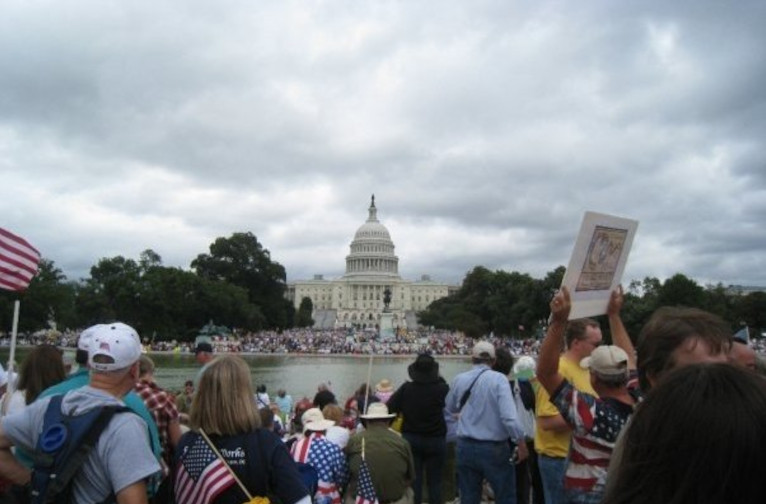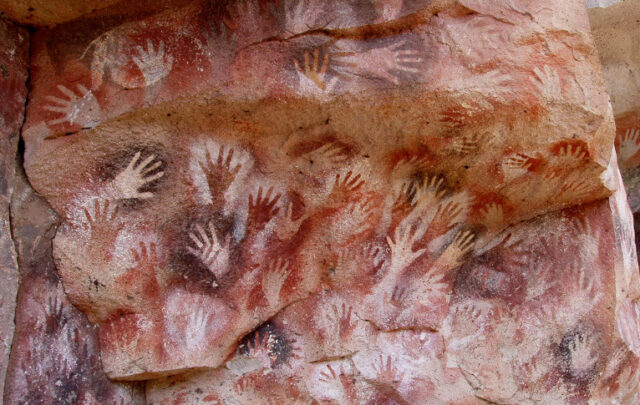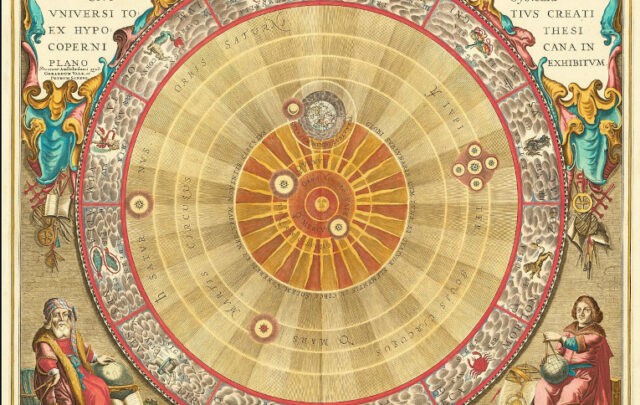Political polarization—the inability of groups such as political parties, religious sects, and cultural identity groups to cooperate even in basic, essential matters—has been a worry and a threat since American democracy began, and for many centuries before. James Madison called it “faction,” and in The Federalist, No. 10, he wrote, “The friend of popular governments never finds himself so much alarmed for their character and fate as when he contemplates their propensity to this dangerous vice.”
Madison had good reason to be concerned. Seventy-four years after he wrote this, polarization turned toxic as the United States plunged into a bloody Civil War over slavery that has sent shock waves through American politics ever since. Some of those reverberations—over racial and social justice—have contributed to making the first half of the 21st century one of the most polarized periods in U.S. history, raising fears for the future of democracy and deeper concerns that our society could sink into tribal violence. A 2022 poll found that 28 percent of Americans considered “political extremism or polarization” to be “one of the most important issues facing the country, trailing only ‘inflation or increasing costs’ and ‘crime or gun violence.’”
Polarization is not simple. At the most basic level, it is produced by rigid differences of outlook and opinion that make reaching a consensus on social aims difficult. Every issue appears to crystallize into an insoluble opposition: Black versus white, market efficiency versus social justice, unemployment versus inflation, and social security versus accumulating debt. Polarization turns toxic when discussion, let alone consensus, becomes impossible and violence seems inevitable, ending with the elevation of popular movements into tyrannies and the consignment of opposing groups to prison or the guillotine. This is the outcome many fear is becoming possible today.
Toxic polarization is the product of three factors in individual and social development, all of which can be traced back to the beginnings of human society: malignant bonding, the scarcity mind, and historical and trans-historical trauma. Each factor develops independently, but they reinforce each other to produce a society that is prone to intractable and violent divisions.
Malignant Bonding
Bonding is a fundamental aspect of human culture. We bond in intimate relationships, as families, but also, and less obviously, in the multitude of associations—friendships, working partnerships, institutional and citizenship ties—that form a society. This promotes understanding and cooperation in the interest of building a community that addresses individuals’ and groups’ needs and aspirations. At its best, bonding is built on goodwill: an inclination in favor of empathy, good-faith communication, mutual aid, and an openness to finding common ground that is inclusive and widely beneficial to change.
But bonding can also be malignant, solidifying communities built on resentment, bigotry, and a desire to exclude those who are “different.” The “longing to belong” can easily lead us to think that the only way to be “in” is not to be left out. The result is a narrowing of the “we”—the larger community’s shared identity—as the powerful assert themselves and the fear of being excluded makes some types of identities and associations dangerous. The narrowing of the “we” reduces our ability to discuss urgent common problems such as climate change, social and economic inequality, and the upsurge in mass migration and displacement, let alone permit a consensus on policies to address these issues.
The absence of goodwill marks the difference between constructive and malignant bonding, and hence, between polarization and toxic polarization. When goodwill is present, it is possible to disrupt the perceptions at the root of toxic polarization and malignant bonding and open up space for the consideration of inclusive change. When goodwill is frozen out, this alternate course is almost impossible to perceive.
The Scarcity Mind
Malignant bonding is encouraged and perpetuated by a second factor: scarcity. The material condition of scarcity is very familiar to us today, given the mounting evidence regarding the effects of climate change, the race to lock up valuable natural resources, and mounting economic inequality.
But scarcity can also be a psychological state, the “scarcity mind”: an imposition on experience that shapes it into how we observe and understand events and others. Even when essential goods and resources are not scarce, they are believed to be so. The scarcity mind operates independently and is dynamically connected to malignant bonding, deriving from history and prehistory. When lifespans were short, life itself was often perilous, and material scarcity was an ever urgent problem, bonding was a way to find security and alleviate want. Even when human societies became larger and more complex, this primal connection between bonding and scarcity remained psychologically powerful—and still is.
Historical and Trans-Historical Trauma
The third major factor in producing societies prone to toxic polarization is something universal to human experience: trauma. For individuals, trauma can be the result of accidents, physical, and psychological abuse in interpersonal, social, or institutional relationships, war, natural disasters, illness, or other disturbing experiences.
But it also has a millennial impact, having gathered over thousands of years of our species’ often harsh and violent development. The fears and compensating behaviors that accumulate as a result of the physical and emotional violence, become coded into our collective behavior as societies.
Because its effects are so profound and persistent, trauma—from social pecking orders, predators, material rivalries, sexual selection, wars, precarious systems of sustenance, climate, and geographic shifts—has been and continues to be a critical ingredient in human development. We are always pushing back against the effects of various kinds of trauma, which tend to throw the positive aspects of bonding out of balance in favor of the malignant.
How and with whom we bond—individually and in communities—is driven by our desire not to experience either trauma or this imagined scarcity, even if it means drawing boundaries that leave many of us outside.
Institutional Scarcity
Trauma plays a critical role in generating and reinforcing the scarcity mind and then building it into the institutions—such as the government, commerce, household, and family—that make up our social infrastructure. The way those institutions function—and have functioned over time—produces what we experience as “common sense”: our assumptions about how to make intelligent decisions. This common sense is therefore informed at least in part by malignant bonding, the scarcity mind, and historical and trans-historical trauma.
Pierre Bourdieu, in Outline of a Theory of Practice, called this “disposition” or “sense of the game”: a partly rational but partly intuitive understanding of fields and of social order in general, giving rise to opinions, tastes, tones of voice, typical body movements and mannerisms, and other ingrained habits and assumptions. These help to reproduce prejudices and other social forms of domination, which eventually seem natural.
This “disposition” is then baked into our social, political, and economic institutions to produce a society typified by what we call “institutional scarcity”: an acceptance of the scarcity mind and an accompanying set of assumptions about the limits to what’s possible. The process begins as communities and cultures build distinctive technologies and ways of life and come into more frequent direct contact with each other, developing often exclusive territorial identities. Our institutions, in turn, ensure that these assumptions are kept wired into us as members of society, producing a “collective common sense” that frames our behavioral and political affinities.
This dynamic—of bonding over perceived scarcity—has persisted and still shapes our institutions, too often keeping goodwill approaches and solutions out of reach. Often, institutional actors—influential figures in politics, business, religious, or cultural life—build popular support by turning scarcity—real or presumed—into a critical yardstick for judging value: elevating the market against the common good, the possession of ideas (“intellectual property”) against collaboration and sharing, and exploiting threats of insufficiency to exclude the foreigner and promoting malignant bonding.
The emotional and physical violence that inevitably results from institutional scarcity generates new waves of trauma among non-dominant, outsider groups. This, in turn, encourages all groups to shut themselves off and push back against change for fear of losing cohesion, having to share resources, or exposing themselves to further trauma. The result is a further narrowing of the “we”—for example, those who can be regarded as part of our nationality, as respectable, as worthy of consideration or assistance by society as a whole—and a fierce attachment to that shrinking “we” by the people who feel entitled to claim membership in it. Often, these people hold more material wealth and feel a correspondingly greater desire to protect and preserve it; frequently, they are joined by people with far less material wealth but a shred of social capital—whiteness, maleness, and property—that they are just as fiercely determined to hold on to.
Institutional scarcity and the shrinking of the “we” affect our ability to communicate, inducing us to scrap the rules of engagement we normally apply to people we bond with. Powerful emotions like resentment make the listener less patient with the respectful, methodical discussion that characterizes good faith argument, and more welcoming of the sudden emotional outbursts and hyperbole—the catharsis—that a party in bad faith will indulge in when they feel they are losing the case. Catharsis, in turn, strengthens the pattern of toxic polarization, making it ever harder to break.
How We Learn and Change
Polarization and the elements that cause it are not going away. “The latent causes of faction are thus sown in the nature of man,” Madison wrote, “and we see them everywhere brought into different degrees of activity, according to the different circumstances of civil society.”
We are not destined to experience a future riven by toxic polarization and straitjacketed by institutional scarcity, however. We have a choice.
While malignant bonding, the scarcity mind, and historical trauma are powerful shapers of human society, there have always been powerful and, often, very effective counterbalancing factors. Three in particular have driven personal, social, and political changes at significant scales throughout human history:
- The human brain’s plasticity and our emotional capacity to overcome trauma;
- The persistence of variety in the forms of social organizations that humans have created over millennia; and
- Our historical experience in struggling for social justice, as previously excluded people have shaken off their oppression.
The human brain’s plasticity: Findings in neuroscience tell us that our brains are more plastic—more flexible, and more capable of transformation and growth—than we had suspected. We can, literally, change our minds, and human interaction is often the fulcrum that makes this happen. These findings suggest that the human brain is uniquely wired to learn from and adapt to its environment, and for understanding, empathy, and reciprocity.
The persistence of variety: Social systems are not all the same; they range greatly in style and behavior and have borrowed from each other compulsively despite long episodes of conflict and isolation, demonstrating the power of human choice. While history is often taught as a progressive evolution ending in today’s dominant system, the modern state (“the end of history”), recent research and scholarship in anthropology and archaeology—notably David Graeber and David Wengrow’s The Dawn of Everything—reveals a more complex history, dating back thousands of years, in which humans have adopted a multitude of different ways to organize themselves politically, socially, and economically.
Some of these societies had formal leaders, and some did not. Some emphasized cooperation over competition and organized along non-hierarchical lines, and yet created complex, sophisticated societies that lasted for centuries. The modern era is unusual in the narrow set of government structures it chooses from—but there is no reason to believe we are limited to only these.
Our historical experience: We are wired to include as well as exclude; conscious decisions to do the latter have a powerful motivational force of their own.
Research, including Benjamin Libet’s famous experiments on the timing of volitional acts, has shown that apparently conscious decisions to act are preceded by an unconscious buildup of electrical activity within the brain. But this does not mean that humans will play no part in the initiation of action; on the contrary, people have the capability to veto “predictions” generated deep in the brain. Libet called this the “free won’t,” distinct from free will: the idea that conscious acquiescence is required to allow the unconscious buildup of readiness to be actualized.
We know, for example, that trauma can be processed, and its effects minimized. We also know that bonding can be achieved across racial, ethnic, and religious lines. Powerful, disruptive transformations are ubiquitous in human history, often precipitated by forces that build up with little attention and then burst to the surface in a moment of crisis.
Historical examples abound. An end to feudal dues and economic subservience for the peasant class in France was considered unthinkable in the decades before 1789. Then, a fiscal crisis and collapse of royal authority made it unstoppable.
Pressure for Black liberation in the U.S. built up over many decades following the Civil War and Reconstruction, then acquired unstoppable momentum when African Americans first became vital to the war effort during World War II, they then leveraged the Cold War and the need for a national consensus to press successfully for integration of the armed forces, integration of public schools, voting rights, and an end to Jim Crow. All of this was achieved in less than two decades.
In both cases, a complex, carefully defined, and intensely unequal social order was overturned by long-building forces acting in response to a crisis of that social order. While the practical changes achieved were incomplete, the deeper cultural transformation amounted to what has been called a “transvaluation of all values”: a reassessment of the worth of formerly accepted things in terms of their “value for life.”
Conclusion: Beyond Polarization
In this article we have offered a framework for understanding how toxic polarization operates in our institutional structures and prevents us from addressing societal problems through goodwill and good faith; i.e., another frame of reference for understanding why and how humanity has repeatedly found itself locked into this social pattern, how it builds itself into our governing institutions, and how we have repeatedly found our way out of it.
“The CAUSES of faction cannot be removed,” Madison wrote; “relief is only to be sought in the means of controlling its EFFECTS.”
But there is no single path forward in tackling these perennial elements of human society: toxic polarization as the product of malignant bonding, the scarcity mind, and historical and trans-historical trauma, which together produce a society-wide, institutional scarcity and a narrowing of the “we.” There is no such thing as a permanent victory in this struggle; preserving and extending the capacity for goodwill is a perennial challenge for human society. Nevertheless, we have repeatedly succeeded in opening spaces that have allowed us to solve problems we previously thought were insoluble.
A powerful argument for pursuing a more inclusive vision based on goodwill is that despite humans’ propensity for divisiveness, greed, and aggression, something like it has always existed in some form. To address toxic polarization with a vision based on goodwill is to preserve and extend our will to bond positively, investing in and expanding our “we” dynamics. Nor does the persistence of the common sense of scarcity prove the opposite. All human society exists on a continuum of inclusion and exclusion, which is to say that neither is finally determinative.
There is no step by step, permanent solution to the pattern that creates toxic polarization; the struggle will continue. But the plasticity of the human mind, and the rich variety of historical experiences of humans exercising their free “won’t,” suggest that in every social context, there is a way to struggle effectively.
This article was produced by Human Bridges.





